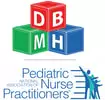For information on anxiety in general, see below. For specific conditions, please click on your desired topic below.
Panic Attack (Specifier)
Characterized by four or more of the following symptoms:
(Note: presence of fewer than four of the below symptoms may be considered a limited-symptom panic attack.)
(Note: presence of fewer than four of the below symptoms may be considered a limited-symptom panic attack.)
|
|
Assessment & Screening
|
Self-Rated
|
Caregiver-Rated
|
Clinician-Rated
|
Position Papers & Practice Parameters
American Academy of Child and Adolescent Psychiatry's Practice Parameter for the Assessment and Treatment of Children and Adolescents with Anxiety Disorders (2007): http://www.aacap.org/App_Themes/AACAP/docs/practice_parameters/JAACAP_Anxiety_2007.pdf
Peer-Reviewed Articles
- Treatment: An evidence-based approach to treating pediatric anxiety disorders (Strawn & McReynolds, 2012)
- Article with treatment algorithm: Pharmacotherapy for Anxiety Disorders in Children and Adolescents (Kodish, Rockhill & Varley, 2011)
- A Proposed Algorithm for Improved Recognition and Treatment of the Depression/Anxiety Spectrum in Primary Care
Resources |
Organizations |
Quick links:
|
For Patients/Caregivers:
For Professionals:
|

